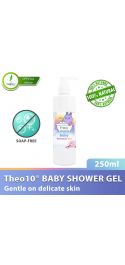
All You Need To Know About Diaper (Nappy) Rash

What Is Diaper Rash?
Diaper (Nappy) rash is an irritation of the skin. It occurs mostly in babies, and it is a common condition. It affects up to 35 percent of children under two years old. Most children suffer from it at least once before they are toilet trained.
Also known as diaper dermatitis, diaper rash causes uncomfortable burning and redness on areas of the skin that come into contact with and rub against a diaper.
This article focuses on common diaper rash, or diaper dermatitis, which responds to basic treatments including frequent diaper changes.
Other types of skin rashes may be agitated by wearing a diaper. These rashes include other forms of dermatitis, psoriasis, and rashes caused by conditions such as syphilis, HIV, and bullous impetigo.
Diaper rash occurs when someone sits too long in a soiled diaper. Diarrhea can exacerbate the problem. Sometimes a child will first experience diaper rash when beginning solid food or taking antibiotics. Breast-fed children can develop diarrhea from what is passed on by their mother’s diet.
Babies soil diapers every three to four hours, so it’s important to keep them changed. The acidic nature of human waste allows bacteria and yeast to grow rapidly. All of these elements can irritate the skin.
Sometimes, diapers that are too tight or that don’t fit properly will cause chafing. Chemicals from detergents or other products that touch the baby’s skin, including the diapers themselves, can cause irritation.
How common does diaper rash occur?
As many as 1 in 3 children develop diaper rash. Breast-fed babies are at lower risk, due to reduced acidity in their diets. All infants and toddlers who wear diapers can develop diaper rash. Usually, diaper rash does not become a problem until the age of three weeks. Risk is highest for babies between three months and one year old.
Occasionally, but rarely, diaper rash is passed from infant to infant.
What Are the Symptoms of Diaper Rash?
Diaper rash causes the skin to look red and irritated. Affected skin may also feel warm to the touch. Parents and caregivers should call a doctor if a bright red diaper rash lasts longer than 48 hours or is accompanied by a strong odor of urine, which may indicate dehydration.
Other times to seek medical help include when rashes form blisters or if the baby develops a fever.
Research published in the Scientific World Journal in 2012 suggests that creams made of plant derivatives, including aloe and calendula, help fight diaper rash. In particular, calendula fights inflammation and bacteria, two of the biggest problems with diaper rash.
Topical creams and ointments are commonly used to treat diaper rash. They include:
- hydrocortisone to reduce swelling
- antifungal or antibiotic creams to combat infections (a doctor may prescribe oral antibiotics as well)
- zinc oxide
- creams and ointments containing steroids should be taken only at a doctor’s recommendation.
It’s quite easy to treat occasional bouts of diaper rash with over-the-counter medications and smart practices at home. The best prevention is also the best cure: frequent diaper changes.
- Make sure your child’s diapers fit properly and not too tightly. The diaper should allow air to get to sensitive areas. Try letting the baby go without diapers during naps.
- Don’t use a lot of soap or wipes with alcohol or perfumes. These can cause drying, which can make symptoms worse.
- Don’t use talcum powder. It can be harmful to babies when inhaled.
Diaper rash is usually preventable if you follow these tips:
- Wash your child’s buttocks with water during each diaper change. Pat dry with a soft towel. Don’t use wipes containing alcohol or perfumes.
- Keep diapers loose. Consider letting your child go without diapers as often as possible.
- Keep zinc oxide on hand. They’re important home remedies in the battle against diaper rash.
- Use diaper rash products that contain zinc oxide to moisturise and prevent diaper rash from occurring.
Adapted from:https://www.healthline.com/health/diaper-rash#Prevention
Powered by Mirasvit Magento 2 Extensions
















